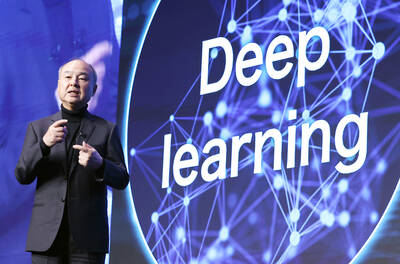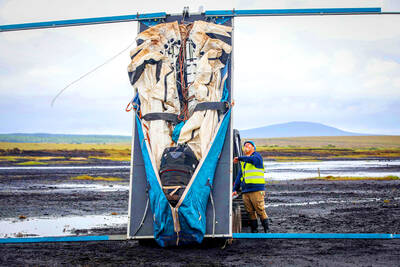Australia's central bank warned yesterday that inflationary pressures mean interest rates may have to be raised again after being hiked last week to a 12-year high.
The Reserve Bank of Australia (RBA) said in its quarterly monetary policy statement that there was a considerable risk of inflation remaining uncomfortably high for some time.
"Therefore, monetary policy is likely to need to be tighter in the period ahead," the RBA said.
It aims to keep inflation within a 2 percent to 3 percent range, but in the last quarter of last year the annual underlying core inflation rates were around 3.5 percent.
The RBA said inflation is forecast to decline gradually from late this year, but would still be around 3 percent in two years' time, even taking into account recent interest rate rises.
Last Tuesday the bank raised its cash target rate by a quarter of a percentage point to 7 percent, the highest in 12 years. This followed two rate hikes last year.
The bank said the situation in the global economy and financial markets remains a major source of uncertainty for the Australian economy and inflation.
"It is possible that there will be a sharper downturn in the world economy than is currently forecast, and there is also a risk that tighter credit supply could constrain demand and activity in Australia to a greater extent than is assumed," the central bank said.
The bank said that if this happened inflation would fall more quickly than is currently forecast.
On the other hand, domestic demand has to date shown considerable momentum, and there are further income gains from the terms of trade and other factors ahead, the RBA said.
"There thus remains a risk under the current monetary policy setting that demand does not moderate sufficiently to achieve the forecast reduction in inflation," it said. "A further risk is the possibility that inflation expectations could rise, which would make the reduction in inflation more difficult to achieve."
The statement weighed on the share market, with the benchmark S&P/ASX 200 closing down 120.4 points, or 2.1 percent, to 5,537.6.
Treasurer Wayne Swan said the inflationary pressures were part of the legacy of the previous conservative government of former prime minister John Howard, which was ousted from power in a landslide vote in November.
The statement by the central bank was a "sobering assessment of how ill-prepared the economy has been to absorb the demand surge flowing from the terms of trade boom," he said. "The higher than expected inflation is the result of price increases that have already occurred and the expectation that pressures on capacity will remain for some time."
Analysts said the statement suggested the RBA was likely to lift interest rates, perhaps twice again this year and possibly as soon as next month.
"Given such a clearly expressed view, we have to expect at least one more tightening by the middle of the year, and perhaps more by the end of the year," HSBC Australia chief economist John Edwards said.
"The RBA forecasts only an economic downturn of considerable violence will stop at least one more rate rise and probably two," he said.
Commonwealth Bank of Australia chief economist Michael Blythe said rates were heading in only one direction "and that's up."
"It looks like a 7 percent cash rate won't be enough," he said.

A proposed 100 percent tariff on chip imports announced by US President Donald Trump could shift more of Taiwan’s semiconductor production overseas, a Taiwan Institute of Economic Research (TIER) researcher said yesterday. Trump’s tariff policy will accelerate the global semiconductor industry’s pace to establish roots in the US, leading to higher supply chain costs and ultimately raising prices of consumer electronics and creating uncertainty for future market demand, Arisa Liu (劉佩真) at the institute’s Taiwan Industry Economics Database said in a telephone interview. Trump’s move signals his intention to "restore the glory of the US semiconductor industry," Liu noted, saying that

STILL UNCLEAR: Several aspects of the policy still need to be clarified, such as whether the exemptions would expand to related products, PwC Taiwan warned The TAIEX surged yesterday, led by gains in Taiwan Semiconductor Manufacturing Co (TSMC, 台積電), after US President Donald Trump announced a sweeping 100 percent tariff on imported semiconductors — while exempting companies operating or building plants in the US, which includes TSMC. The benchmark index jumped 556.41 points, or 2.37 percent, to close at 24,003.77, breaching the 24,000-point level and hitting its highest close this year, Taiwan Stock Exchange (TWSE) data showed. TSMC rose NT$55, or 4.89 percent, to close at a record NT$1,180, as the company is already investing heavily in a multibillion-dollar plant in Arizona that led investors to assume

AI: Softbank’s stake increases in Nvidia and TSMC reflect Masayoshi Son’s effort to gain a foothold in key nodes of the AI value chain, from chip design to data infrastructure Softbank Group Corp is building up stakes in Nvidia Corp and Taiwan Semiconductor Manufacturing Co (TSMC, 台積電), the latest reflection of founder Masayoshi Son’s focus on the tools and hardware underpinning artificial intelligence (AI). The Japanese technology investor raised its stake in Nvidia to about US$3 billion by the end of March, up from US$1 billion in the prior quarter, regulatory filings showed. It bought about US$330 million worth of TSMC shares and US$170 million in Oracle Corp, they showed. Softbank’s signature Vision Fund has also monetized almost US$2 billion of public and private assets in the first half of this year,

On Ireland’s blustery western seaboard, researchers are gleefully flying giant kites — not for fun, but in the hope of generating renewable electricity and sparking a “revolution” in wind energy. “We use a kite to capture the wind and a generator at the bottom of it that captures the power,” said Padraic Doherty of Kitepower, the Dutch firm behind the venture. At its test site in operation since September 2023 near the small town of Bangor Erris, the team transports the vast 60-square-meter kite from a hangar across the lunar-like bogland to a generator. The kite is then attached by a